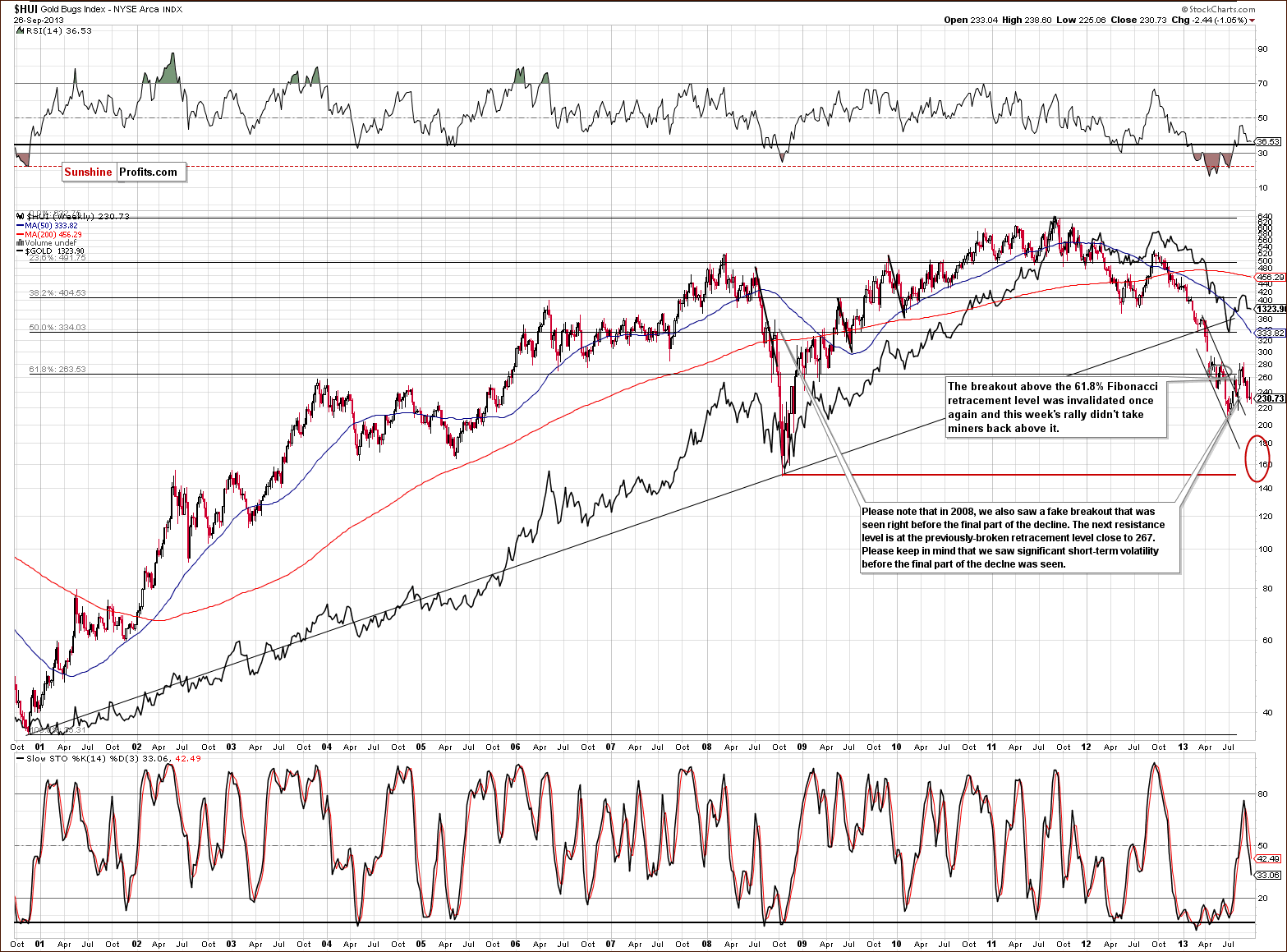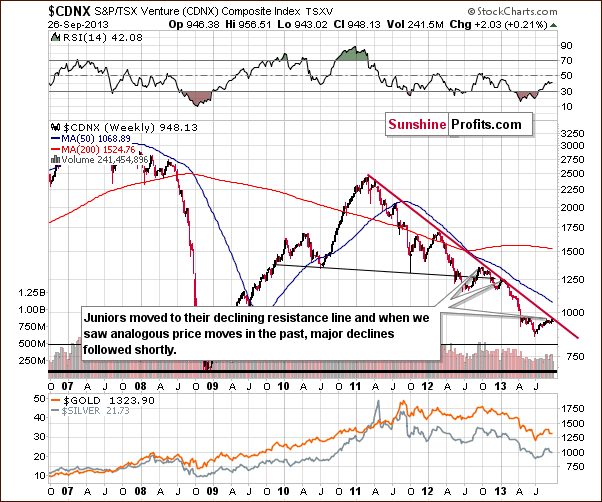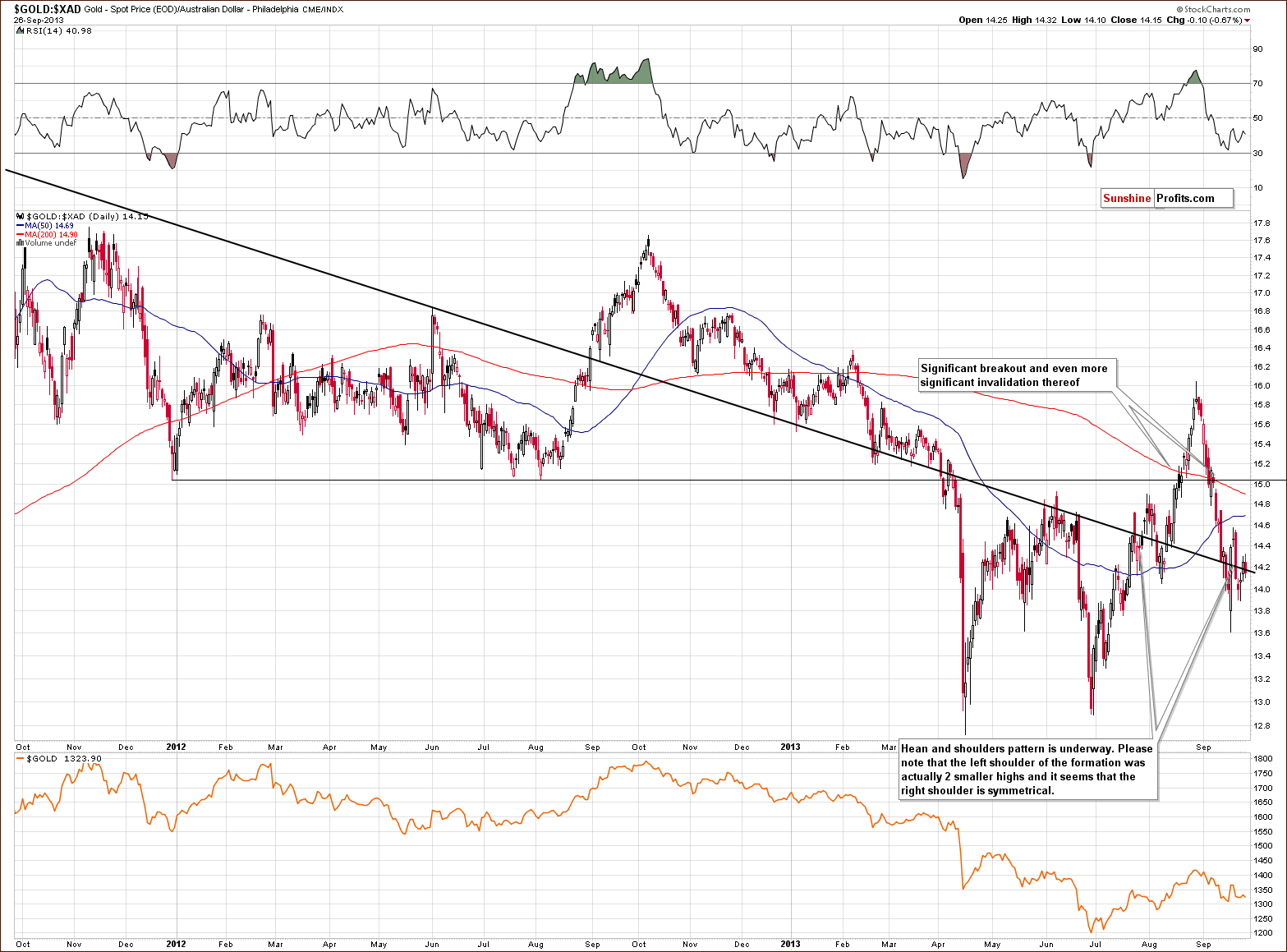The Energy Report: The last time we chatted, you were adamant that the U.S. is not in recovery. Does the Fed’s decision to continue tapering prove you right?
Bob Moriarty: Of course. Tapering spends money without improving things. The Dow and the S&P are at record highs. That’s a good thing, but only 12% of Americans own any shares at all, including in a retirement fund. At the very best, tapering is helping only that 12%.
The reality is that you’re helping the 1%. The 1% is doing very well, but 99% are getting further behind. Plus, we’re increasing the debt. One of these days it will blow sky high. I don’t know whether the Fed will blow up or if the 10-year Treasury yield will, but this is a very dangerous time.
TER: When we talked to James Dines, he said bonds would take a big hit. Are you worried about that?
BM: Of course. The 10-year Treasury is very important because home mortgage prices are set using that as a base. A little over a year ago, the 10-year Treasury was 1.45%; a couple of weeks ago, it hit 3%.
The theory behind not having a taper was that the yield curve would go down. When Bernanke announced there would be no taper, the yield curve was 2.86%. Now, it’s 2.75%. There has been almost no impact. If the 10-year Treasury goes through 3 or 3.25%, we’re going to see Armageddon.
TER: Are China and Europe doing any better?
BM: No. China is slowing down. Europe’s in the same situation we are. People need to understand that you cannot spend your way to prosperity. You can only save your way to prosperity.
Spending the way to prosperity didn’t work for the U.S. and it won’t work for the European Union. The E.U. countries need to get government spending in line with how much money the governments collect. It needs to stop cradle-to-grave subsidies for everything and return to economic reality. After 20 years of crazy growth, China is slowing down, which should be very healthy for its economy.
TER: Angela Merkel was just reelected in Germany, but with a less powerful coalition. Does that restrict her ability to impose austerity on countries like Greece and Portugal?
BM: Austerity is one of those emotionally laden words that is absolutely meaningless. Austerity means living within your means. There is no alternative to austerity. Merkel is in a true dilemma, given that the other twopolitical parties in Germany have said they will not form a coalition with her. She won, but she didn’t win.
TER: Given all that, is the $100+ per barrel ($100+/bbl) price for oil based on conflict fear rather than economic demand?
BM: We passed peak oil in 2005; $100/bbl is the new normal. In a depression, it might go as low as $80/bbl. If there was a real conflict, you could see oil at $300/bbl or $500/bbl. Peak oil has everybody confused. People think it means there is no more oil. There’s still plenty of oil, like shale oil and tar sands oil, but it costs a lot to extract it. The price needs to stay at least $100/bbl for it to be economic. No more cheap oil.
TER: Could a deal with Syria or Iran result in lower gas prices by lessening that conflict fear?
BM: No. I don’t think it’s a supply-based fear. I think it’s an Armageddon fear. The oil price is high because everybody’s afraid we’re going to start World War III, which could well happen.
TER: With all of that going on, are you still investing in energy companies? Are there any safe places left in the world?
BM: The one area I’ve written about in detail lately is the North Island of New Zealand. Two companies down there are doing extraordinarily well.
The first is TAG Oil Ltd. (TAO:TSX.V). On the conventional drilling side, TAG is doing very well. In addition, in the East Coast Basin of the North Island, the company drilled a 4,500-foot hole into shale. To give you an idea, this shale is 300–600 meters (300–600m) thick. By comparison, the Bakken shale is 10–20m thick; in Texas, 30–40m.
That is an absolute home run that the company is being very quiet about. There will be an auction in October and TAG will try to add to its land position then. New Zealand will be a big oil story in five years.
TER: What is the second New Zealand company?
BM: The other is Marauder Resources East Coast Inc. (MES:TSX.V). It has a $7 million ($7M) market cap, but hasn’t done any drilling.
Marauder is riding on TAG’s coattails, which is smart. If TAG hits a home run in the East Coast Basin, it will be a home run for Marauder too. The shale formations tend to go on for hundreds of kilometers. I expect TAG and Marauder to be very aggressive at the auctions in October.
TER: Would Marauder also reach its true potential in the next five years?
BM: I hope so; I own a lot of shares.
TER: You’ve also talked about CBM Asia Development Corp. (TCF:TSX.V) and its coal methane beds. Are you still excited about that?
BM: Yes and no. Coal bed methane and Indonesia are both very exciting, but CBM Asia is just about the worst communicator I’ve seen. Four years ago, the company made a giant mistake by trying to grab as much land as possible. As a result, its costs have gone through the roof and the company isn’t doing anything visible to shareholders. In 2009, the stock was $0.60; today it’s $0.10. The company announced a $15M raise in March and never completed it. Management never told people what was going on.
Going by how much gas it has, CBM Asia should be a $300M or $400M company. Instead, it’s a $16M company that has raised $40M. Management has torn dollar bills in half and thrown them away. CBM Asia could be a home run if you had a change in management first. They should fire the president; he has destroyed a very valuable asset through his lack of communication.
TER: Do any small or midsize producers appeal to you?
BM: I follow the Canadian firm Aroway Energy Inc. (ARW:TSX.V; ARWJF:OTCQX) very closely.
TER: Aroway Energy just increased its reserve estimate by 246%, but there was no correlated increase in its stock price.
BM: Exactly. The company is producing more and it has good management, yet the stock price has been cut in half. It has nothing to do with the merits of the company. It has everything to do with irrational behavior on the part of investors. I’m not concerned over the long term.
TER: Do you like any of the big producers?
BM: I don’t, because they’re like 50,000-pound elephants. When they start moving, they move a lot, but it takes a lot to get them moving.
TER: What about energy services? Does that sector excite you?
BM: Absolutely. For example, Synodon Inc. (SYD:TSX.V) is a home run. It has an extremely effective airborne process for detecting leaks from natural gas or oil. The company has finally gotten traction and is starting to sign more deals. I think it will be very successful over the long term.
TER: Are services a safer play compared to natural gas?
BM: Yes, because natural gas is so cheap. In Indonesia, natural gas is selling at ~$12 per thousand cubic feet ($12/Mcf). But here in North America, it’s ~$3/Mcf. There is a lot of opportunity in energy, regardless of what happens to the economy. It will always be needed in transportation and agriculture.
TER: Given all the scary headlines, what reassurance can you give energy investors?
BM: Here’s what investors need to know: Everybody is aware that gold and silver stocks have gone down, but they don’t realize that many energy stocks have gone down just as much. There has been a giant rush from resources into the mainstream stock market. When that rush changes and people realize that resources are the only safe place to be, things will get interesting.
The worst place to be right now is bonds. The second worst place is the Dow and the S&P. The safest place to be is resources.
TER: Bob, thanks for your time and your insights.
Bob and Barb Moriarty brought 321gold.com to the Internet almost 10 years ago. They later added 321energy.com to cover oil, natural gas, gasoline, coal, solar, wind and nuclear energy. Both sites feature articles, editorial opinions, pricing figures and updates on current events affecting both sectors. Previously, Bob was a Marine F-4B and O-1 pilot with more than 820 missions in Vietnam. He holds 14 international aviation records.
Want to read more Energy Report interviews like this? Sign up for our free e-newsletter, and you’ll learn when new articles have been published. To see a list of recent interviews with industry analysts and commentators, visit our Streetwise Interviews page.
DISCLOSURE:
1) JT Long conducted this interview for The Energy Report and provides services to The Energy Reportas an employee. She or her family own shares of the following companies mentioned in this interview: None.
2) The following companies mentioned in the interview are sponsors of The Energy Report: Aroway Energy Inc. and CBM Asia Development Corp. Streetwise Reports does not accept stock in exchange for its services or as sponsorship payment.
3) Bob Moriarty: I or my family own shares of the following companies mentioned in this interview: CBM Asia Corp., Synodon Inc., Aroway Energy Inc. and Marauder Resources East Coast Inc. I personally am or my family is paid by the following companies mentioned in this interview: None. My company has a financial relationship with the following companies mentioned in this interview: CBM Asia Corp., Synodon Inc., Aroway Energy Inc. and Marauder Resources East Coast Inc. I was not paid by Streetwise Reports for participating in this interview. Comments and opinions expressed are my own comments and opinions. I had the opportunity to review the interview for accuracy as of the date of the interview and am responsible for the content of the interview.
4) Interviews are edited for clarity. Streetwise Reports does not make editorial comments or change experts’ statements without their consent.
5) The interview does not constitute investment advice. Each reader is encouraged to consult with his or her individual financial professional and any action a reader takes as a result of information presented here is his or her own responsibility. By opening this page, each reader accepts and agrees to Streetwise Reports’ terms of use and full legal disclosure.
6) From time to time, Streetwise Reports LLC and its directors, officers, employees or members of their families, as well as persons interviewed for articles and interviews on the site, may have a long or short position in securities mentioned and may make purchases and/or sales of those securities in the open market or otherwise.


 When Bubbles Fail: Albert Edwards Explains What Happens When The Fed Can No Longer Contain The Fury Of The “99%”.
When Bubbles Fail: Albert Edwards Explains What Happens When The Fed Can No Longer Contain The Fury Of The “99%”.
 An economic recovery that isn’t one. A civil war that isn’t one. Cheap oil that is no more. According to Bob Moriarty, resources remain one of the few absolutes in the world. In this
An economic recovery that isn’t one. A civil war that isn’t one. Cheap oil that is no more. According to Bob Moriarty, resources remain one of the few absolutes in the world. In this  As one deadline after another passes, the US government is beginning to shut down.
As one deadline after another passes, the US government is beginning to shut down.













